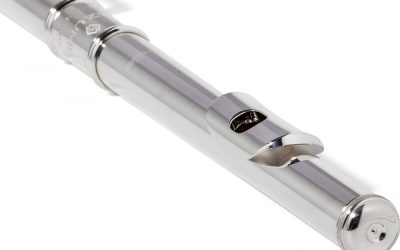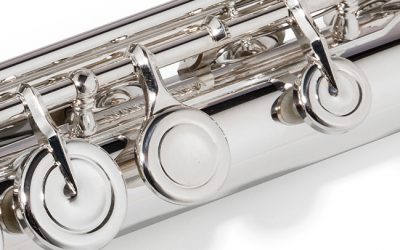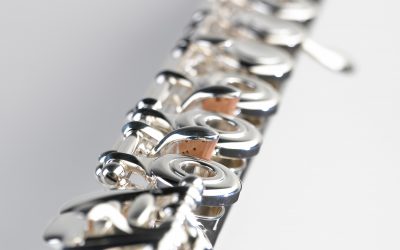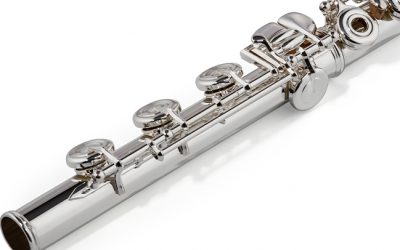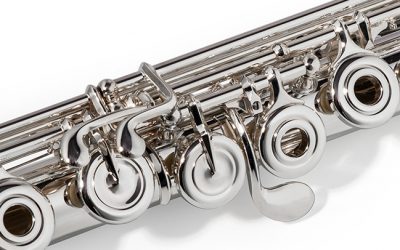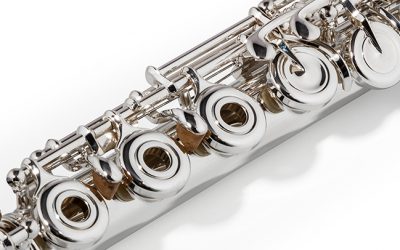The most distinctive feature of all Azumi flutes is the Altus Z-Cut professional headjoint, which responds quickly and easily and produces a full and rich tone in all three registers.
The standard features of Azumi flutes make them an exceptional value for the aspiring flutist. Click on a feature below to learn more.
Pointed Key Arms
Originally reserved for professional models, all Azumi Flutes feature pointed key arms for an elegant and refined look, even pad wear, and improved key strength.
Altus Scale
Based on the work and recommendations of British flutist William Bennett, the Altus scale offers excellent intonation, carefully tuned harmonics, and balanced registers.
Open Holes
An open-hole flute has holes at the center of the A, G, F, E, and D keys. Open holes are the standard among intermediate flutes and are the preference of the majority of professional flutists.
B Footjoint
The flute’s footjoint can be built to low C or B. The B foot reaches down to a low B, one half-step lower than the C footjoint. It has one more key and the length of the tube is extended by about one inch.
C# Trill Key
The C# trill key is a lever activated by the first finger of the right hand to open a tone hole next to the thumb key. It simplifies many awkward trill and tremolo fingerings and has become a preferred feature among professional flutists.
Inline or Offset G Keys
The G keys of a flute can be made inline or offset. There is no difference in the tone produced with inline or offset G keys, it is simply a matter of comfort and preference.
Split E Mechanism
The Split E mechanism is designed to improve intonation and response on high E’s (E6). All flutes rely on the G key to also close the key next to it. The Split E mechanism physically splits these coupled keys so that the G key itself can stay open while its partner key closes with the right hand keys.

